Ten years ago, Alice Holden was figuring out what to do with her life. She'd just left university and was staying on her parents' farm in Wales, helping to bring in that summer's harvest. After that, she worked on farms in the UK and Canada, but felt uncomfortable calling herself a farmer. "I didn't think of it as a good enough profession," she says. She stuck with it, eventually managing a 100-acre farm in Wales by herself. At a school reunion a few years ago, it was her old classmates with jobs in the City who were jealous: "They kept saying, 'That's what I want to do!'"
Now 32, she's working in Dagenham, a town better known for its Ford car factory, turning a four-acre, ex-council nursery into an organic market garden. Holden is managing the site for Growing Communities, an OFM Award-winning organisation that grew up around a box scheme and farmers' market in Hackney. The Dagenham site is their first "starter farm". When Holden took it over in May 2012, the nursery was in a state and needed 120 tons of compost to get things moving again. "We've got two years of funding from the National Lottery, which takes us to next May. At that point it's got to be a viable working farm."
She has begun selling produce to restaurants around east London, but what about Dagenham? "We've started a stall here on Thursdays. Because the costs are less – people are picking it up from the farm – we can sell it cheaper."
For Holden, growing your own vegetables is also creative. "Cooking the food you've grown and sharing it: that's an emotional and creative thing to do." Killian Fox
Growing your own: the basics
What you decide to plant will be somewhat dictated by the space you have. If you do not have garden beds you can grow vegetables in window boxes, pots or grow bags. These need to be big enough not to cramp a plant's roots nor dry them out at the first sign of any sun. The greater the soil depth the better, although a minimum of 15cm is enough for salads. Vegetables will grow best in a sheltered and sunny spot.
Soil is fundamental to the health of what you grow. To make sure you have the fertility required to grow lots of produce, add compost. This can be made in home compost heaps or bought from garden centres. I use "organic" composts made without manmade, resource-hungry fertilisers.
To give young plants the best odds of survival against their main nemesis, the slug, I sow most vegetables in small pots, somewhere where's lots of light indoors or in a greenhouse. Starting plants off indoors means you can control conditions when they are at their most vulnerable.
To give a plant a good start, sow the seed into fine compost – this is usually called seed compost and is available at garden centres. All of the vegetables here can be started in 10cm pots. Once a plant has four or five leaves it can be planted outside in a chosen optimum position at its required spacing.
In return for all the harvest, soil needs to be nurtured by applying composted organic matter to aid structure and maintain fertility. Here are my four recommendations to grow now. I have selected them for their bounty and beauty: they can give a great return even on a small scale.
Lettuce
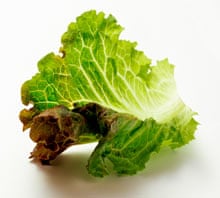
Lettuce is a brilliant vegetable to begin with if you have never grown anything before. It can be grown in a window box if space is limited and you can harvest outer leaves as you need them without pulling up the whole plant. Having a living salad larder on your window sill or raised bed can be very handy during the summer months.
Start the seeds off indoors then thin out the seedlings when you plant them outside. The amount of space you give them will dictate the size of their leaves. For whole heads of lettuce, plant each seedling approximately a lettuce width apart. For smaller, more tender leaves, a closer spacing will mean their neighbours will stunt their growth. Both work well, so how you space them is up to you.
Tomatoes
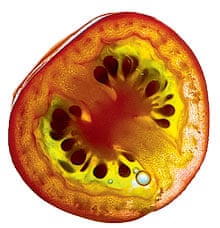
Tomatoes are my favourite vegetable to grow. Because of our temperate climate they require nurture and protection through their first few months. In order to get a ripe crop before autumn they need to be well established plants by May/June. Seed sown in late winter can be raised indoors, in good light. Alternatively, buy potted plants in May to be replanted outside in a sunny, sheltered position after the last spring frosts. Tomatoes require a lot of vertical space – as they grow taller, plants become unable to bear their own weight so need to be supported. In greenhouses, they can be grown up strings tied to the roof supports. Outdoors, they can be tied to canes or grown with supports against a sunny wall.
To channel a plant's energy into producing fruit, it will need to be pruned regularly. To greatly increase your yield of fruit, remove all tomato "side shoots". These are the shoots that continually grow at a 45º angle between the main stem and plant branches. Twisting them out will greatly increase your yield. By the time a plant has two fruiting trusses (branches with fruit on), I prune off all lower leafy branches up to the second truss. This will allow good air flow and light to reach the pruned plant, which in turn will help prevent disease.
Chard

Chard is a wonder vegetable in terms of its ease of growth and abundance through the year. Rainbow chard is the prettiest with its bright pink or yellow stems.
Sow seeds now and plant out at a spacing of around 25-30cm when about a month old. When leaves are of a size worth cooking, cut the plant across its base leaving a few centimetres of stalk and small new leaves to grow on from the centre of the plant. These leaves will produce your next harvests. Eventually the plant will bolt (begin to produce flower and seed rather than leaf). Regular harvest will postpone this happening. It is worth sowing a second batch of seed in August to give you new plants to replace the old. These later sown plants will often survive outdoors right through to the next spring. Leaf growth will slow with encroaching cold and decreasing light, but chard will generally manage to keep producing some harvest when fresh greens are sparse.
Courgettes
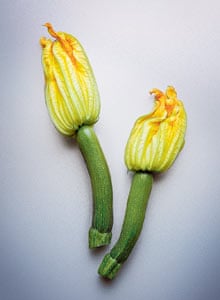
If you have a bit more space (each plant needs to be about 60-70cm apart) or a large pot, courgettes are extremely satisfying to grow. Initially sown indoors in pots, they emerge almost overnight, eventually producing large Gaugin-like leaves after they have been planted outside. Finally they send out beautiful tubular yellow flowers, the female of which will produce fruit. Courgettes like full sun, well composted fertile ground and regular watering in dry weather.
The flowers are also a delicacy, torn into salads, stuffed with goat's cheese or fried in tempura batter.
Do Grow by Alice Holden (The Do Book Company, £7.99 or £3.99 ebook). To order for £5.59 with free UK p&p, click here
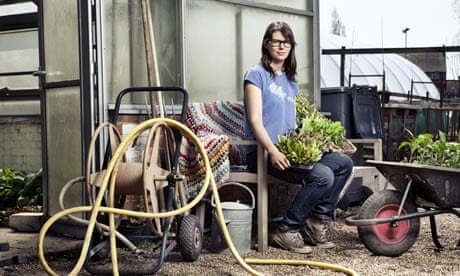



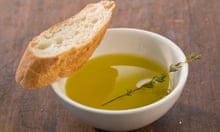


Comments (…)
Sign in or create your Guardian account to join the discussion